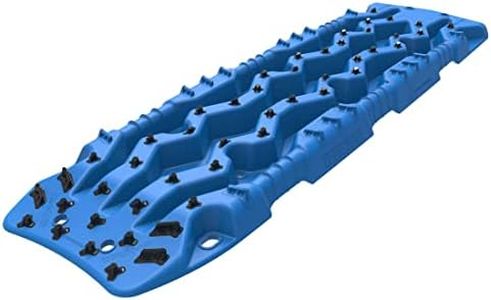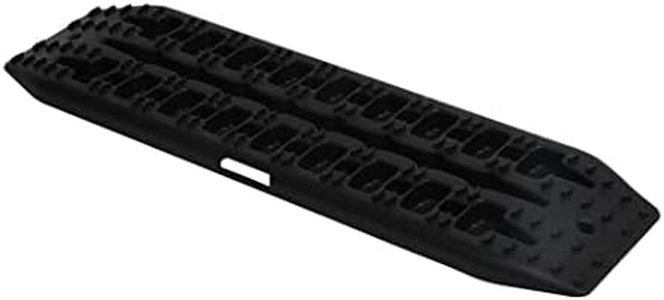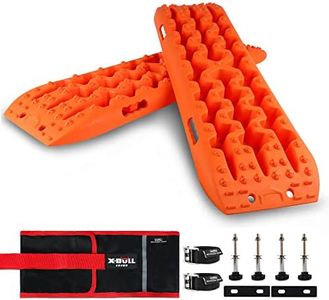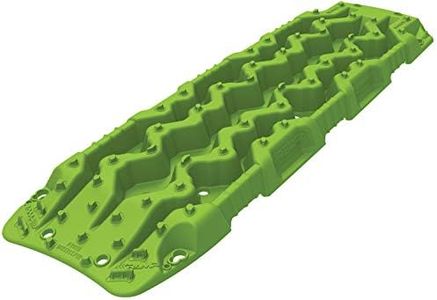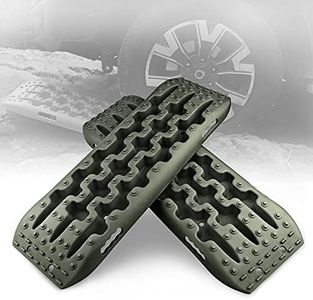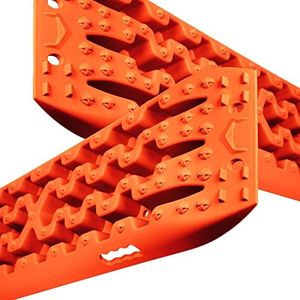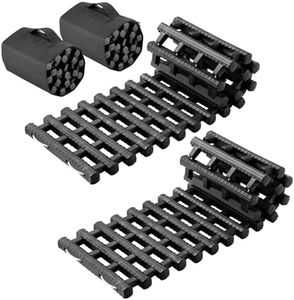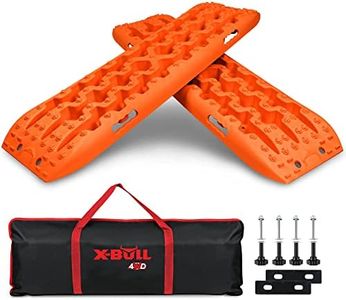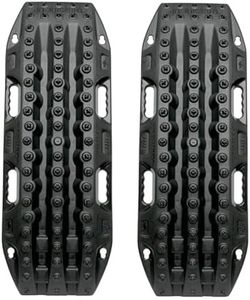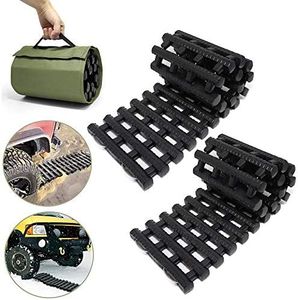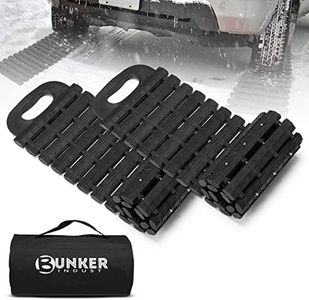We Use CookiesWe use cookies to enhance the security, performance,
functionality and for analytical and promotional activities. By continuing to browse this site you
are agreeing to our privacy policy
10 Best Traction Boards
From leading brands and best sellers available on the web.Buying Guide for the Best Traction Boards
Traction boards are essential recovery tools for anyone who ventures off-road, camps, or drives in areas where vehicles can get stuck in mud, sand, snow, or loose gravel. Their main job is to give your tires the grip they need to move your vehicle out of slippery or loose terrain. Selecting the right traction boards means understanding how and where you'll use them, the type of vehicle you have, and the conditions you expect to encounter. Focus on build quality, size, ease of use and how easily you can carry or store them with your gear.MaterialTraction boards are primarily made from heavy-duty plastics, sometimes reinforced with metal or fiberglass. This specification is important because it determines how much weight and pressure the boards can withstand before breaking. Thicker and well-engineered plastics are best for heavy vehicles or frequent recovery, while lighter plastics might suffice for compact cars or rare use. If you drive a large SUV or truck, or expect to recover vehicles in tough situations, opt for more robust materials. For casual users or smaller vehicles, lighter boards are easier to handle and store.
Size and LengthThe size and especially the length of traction boards determines how much grip they can provide and how easily your vehicle's tires can climb out of a hole or loose surface. Longer boards give more travel space for your tires, which is helpful for larger vehicles or deeper ruts. Short boards are more portable and easier to store, but may not offer enough surface area for heavy vehicles or extreme conditions. Consider your vehicle's wheelbase and available space in your car when choosing the right size. If you mainly drive a compact or don't have much storage, shorter boards are practical. For off-road trips with large vehicles, bigger boards are usually better.
Weight CapacityWeight capacity tells you how much load the boards can handle without bending or breaking. This is vital if you have a heavy 4x4, van, or are carrying cargo, as boards with lower capacities might fail under heavy loads. Manufacturers usually specify the maximum weight capacity per board. Light-duty boards are suitable for cars and crossovers, while heavier, reinforced ones are needed for trucks, SUVs, and vehicles carrying substantial equipment. Always check your vehicle’s weight before picking a board, and opt for a higher rating if you’re unsure.
Grip PatternThe surface pattern of traction boards includes raised lugs, teeth, or ridges that bite into your tire and the ground. This directly affects how well the board can help you get unstuck. Aggressive and deep patterns are better for mud and snow, while finer patterns can be sufficient for sand. When choosing, consider the type of terrain you expect to encounter most often. If you drive on a variety of surfaces, look for boards with a versatile grip design.
Stackability and PortabilityHow easy it is to transport and store your traction boards matters, especially if you have a smaller vehicle or limited storage space. Some boards are designed to stack together neatly, making them easier to carry and stow. Others may have handles or mounting holes. If storage is a concern for you, pay attention to the overall thickness and stackability. For frequent travelers or those with minimal space, pick boards that are easy to strap onto a roof rack or fit in your trunk.
Temperature ResistanceTraction boards can be exposed to harsh cold or hot conditions. Some plastics become brittle in extreme cold or warp in high heat. Temperature resistance ensures your boards won’t crack or deform when used in snow or under the scorching sun. If you live or travel somewhere with temperature extremes, prioritize boards rated for a wide range of temperatures.

